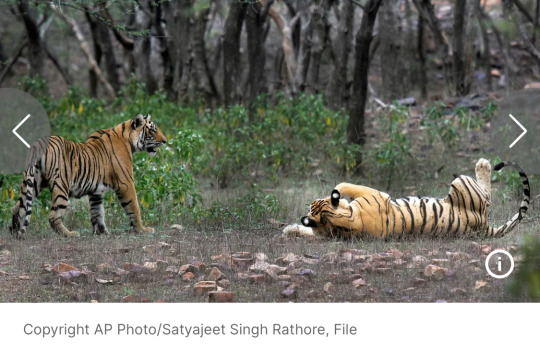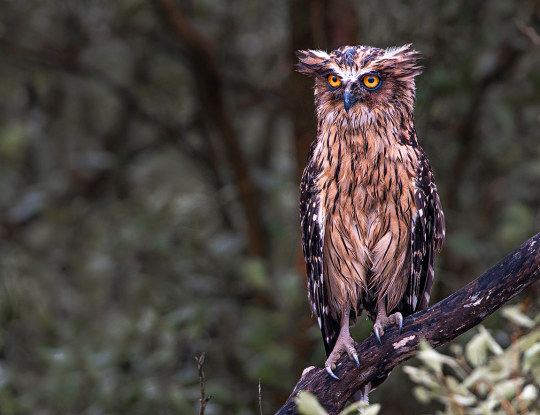#tiger of india
Explore tagged Tumblr posts
Video
youtube
ভারতের সত্যিকারের বাঘ: ব্রিটিশরা যাকে দেখে বাঘের মতো ভয় পেতো। টিপু সুলতা...
টাইগার অব মাইসোর: টিপু সুলতানের জীবন, সংগ্রাম ও ঐতিহাসিক অবদান | Tipu Sultan Biography in Bengali
টিপু সুলতান—"টাইগার অব মাইসোর" নামে পরিচিত এক মহান বীর, যিনি ব্রিটিশ ইস্ট ইন্ডিয়া কোম্পানির বিরুদ্ধে প্রথম সুসংগঠিত প্রতিরোধ গড়ে তোলেন। এই ভিডিওতে আমরা তুলে ধরেছি তার শৈশব, সংগ্রামী জীবন, মাইসোরের চারটি যুদ্ধ, প্রশাসনিক দক্ষতা, সামরিক কৌশল, এবং ভারতের ইতিহাসে তার অবদান। আপনি জানবেন কীভাবে তিনি আধুনিক প্রযুক্তি, রকেট আর্টিলারি এবং অর্থনৈতিক উন্নয়নের মাধ্যমে মাইসোরকে শক্তিশালী করেছিলেন।
ভিডিওটি দেখার পর আপনি জানতে পারবেন:
টিপু সুলতানের শৈশব ও পরিবার। ব্রিটিশদের বিরুদ্ধে তার ঐতিহাসিক যুদ্ধ ও প্রতিরোধ। তার প্রশাসনিক নীতি এবং ধর্মীয় সহনশীলতা। "টাইগার অব মাইসোর" উপাধির পেছনের কাহিনী। তার মৃত্যুর কারণ এবং ব্রিটিশ শাসনের শুরু। কেন এই ভিডিওটি দেখবেন? টিপু সুলতান শুধুমাত্র একজন যোদ্ধা নন, তিনি ছিলেন ভারতের উন্নয়নের অগ্রদূত। তার জীবন এবং সংগ্রামের গল্পে রয়েছে বীরত্ব, শৌর্য এবং আত্মত্যাগের নিদর্শন। ইতিহাসপ্রেমী, শিক্ষার্থী, এবং যে কেউ ভারতীয় ঐতিহ্য সম্পর্কে জানতে চান, তাদের জন্য এটি একটি চমৎকার রিসোর্স।
ট্যাগস: #TipuSultan #TigerOfMysore #IndianHistory #MysoreWars #BengaliHistory #IndianFreedomFighters #TipuSultanBiography #BritishEastIndiaCompany
টিপু সুলতান, টাইগার অব মাইসোর, মাইসোর যুদ্ধ, টিপু সুলতানের জীবনী, ভারতীয় ইতিহাস, টিপু সুলতানের অবদান, ব্রিটিশ ইস্ট ইন্ডিয়া কোম্পানি, ভারতীয় স্বাধীনতা সংগ্রাম, মাইসোর রকেট, মাইসোর সাম্রাজ্য, Tipu Sultan, Tiger of Mysore, Mysore Wars, Tipu Sultan Biography, Indian History, British East India Company, Mysore Rocket, Indian Freedom Fighters, Tipu Sultan History, Bengali History, Historical Warriors, Indian Leaders, Independence Movement
0 notes
Text

Bengal Tiger (Panthera t. tigris), family Felidae, walking amongst Black Storks and an Egret at the Pilibhit Tiger Reserve, India
photograph by Punit Dhameja
2K notes
·
View notes
Text

Amazing eyes on a tiger photographed by Anirudh Laxmipathy.
482 notes
·
View notes
Text
American Volunteer Group - AVG - pilot and group candids










#avg#flying tigers#american volunteer group#china burma india#ww2 aircraft#ww2 photo#ww2 era#ww2 history#p 40 warhawk#military aircraft#military aviation#military history#fighter pilot#usaac#usaaf
229 notes
·
View notes
Text

Picasso Moth (Baorisa hieroglyphica), family Erebidae, found in India and SE Asia
photograph by msone
1K notes
·
View notes
Text
Dandelion News - February 1-7
(sorry it’s late, I’ve had pneumonia. between fever and meds, today was the first day in over a week I could even think)
Like these weekly compilations? Tip me at $kaybarr1735 or check out my Dandelion Doodles!
1. These solar streetlights can withstand Category 5 hurricanes

“[The solar-powered streetlights] can identify potential problems before an outage occurs, identify current outages without the need for customer reporting, and allow for remote control of brightness settings. The streetlights are built to remain operational even during widespread power outages.”
2. 15 Democratic state AGs stand by gender-affirming care

“"Federal funding to institutions that provide gender-affirming care continues to be available, irrespective of President Trump’s recent Executive Order," the attorneys general say. […] “Health care decisions should be made by patients, families, and doctors, not by a politician trying to use his power to restrict your freedoms.”
3. India doubles tiger population in a decade

“[India has protected] the big cats from poaching and habitat loss, ensuring they have enough prey, reducing human-wildlife conflict, and increasing living standards for communities near tiger areas.”
4. A North Carolina wildlife crossing will save people. Can it save the last wild red wolves too?

“There are thought to be fewer than 20 red wolves left in the wild[…. S]tate agencies and nonprofit groups [plan to] rebuild a 2.5-mile section of the highway with fencing and a series of culverts, or small underpasses, to allow red wolves – as well as black bears, white-tailed deer and other animals – to pass safely underneath traffic.”
5. Merrimack Valley public transit system will keep bus fares free
“[… C]ollecting fares [used to] cost MeVa about $300,000 a year to maintain fare boxes, pay staffers and afford insurance. Since going fare free in 2022, the report found ridership increased 60% from pre-pandemic levels[….] The program is now funded by state allocated funds, including money from the so called “millionaire’s tax.””
6. Health care is key for youths getting out of prison. A new law helps them get it

“[The new law] requires all states to provide medical and dental screenings to Medicaid- and CHIP-eligible youths 30 days before or immediately after they leave a correctional facility. Youths must continue to receive case management services for 30 days after their release.”
7. World’s smallest otter makes comeback in Nepal after 185 years

“Scientists have for the first time in 185 years confirmed the presence of the Asian small-clawed otter in Nepal[….] The last time the […] the smallest of the world’s 13 known otter species, was recorded by scientists in Nepal was in 1839.”
8. B.C.'s smallest First Nation has big plans for a 'stewardship' economy
“The Kwiakah Centre of Excellence will be the base for a dedicated research station, an experimental kelp farm, the nation’s regenerative forestry operations and its territorial Indigenous guardian, or Forest Keepers, program[…. R]esults will include a 100-year management plan that integrates climate, salmon, kelp, and soil research to protect territorial waters and remaining old growth forests.”
9. Glades County schools deploy 13 new Blue Bird electric school buses

“The students at the Glades County school district will directly benefit from the cleaner, quieter rides, and operational cost savings that electric school buses provide[, as well as] the addition of much-needed air conditioning in the new school buses. Until now, only three buses in the district provided air conditioning[….]”
10. e.l.f. Beauty CEO defends DEI: 'Our diversity is a key competitive advantage'

“The cosmetics company recently held that it would not nix its DEI initiatives[….] "Our mission is to make the best of beauty accessible to every eye, lip and face," [CEO] Amin said. "One of the best ways we know how to live that mission is to have an employee base that reflects the community that we serve."”
January 22-28 news here | (all credit for images and written material can be found at the source linked; I don’t claim credit for anything but curating.)
#hopepunk#good news#nature#hurricane#infrastructure#solar#us politics#healthcare#gender affirming care#india#tiger#conservation#animals#endangered species#red wolf#wolf#public transit#anti capitalism#prison#medicaid#youth#otter#nepal#world news#indigenous#canada#florida#electric vehicles#dei#cosmetics
142 notes
·
View notes
Text
131 notes
·
View notes
Text


india love has rahu in chitra (tiger yoni) venus & saturn in purva bhadrapada (lion yoni) mars in dhanishta (lion yoni)
lion & tiger yoni natives are frequently drawn to cheetah/leopard/tiger print clothing
#astro notes#vedic astrology#astro observations#chitra#dhanishta#purva bhadrapada#mars#jupiter#meow#india love#🐅#lion yoni#tiger yoni#rahu#venus#saturn
128 notes
·
View notes
Text

" A Tusker in Golden Light " // © Subramanya Chandrashekar
#Corbett Tiger Reserve#India#nature#landscape#Wildlife#Elephants#Silhouette#Dusk#Reserve#Conservacy#photography#aesthetics#wanderlust#explore#follow#discover
79 notes
·
View notes
Text
Tallying every single tree in the kingdom. Endangered South Asian sandalwood. British war to control the forests. European companies claim the ecosystem. Failure of the plantation. Until the twentieth century, the Empire couldn't figure out how to cultivate sandalwood because they didn't understand that the plant is actually a partial root parasite, so their plantation monoculture approach of eliminating companion species was self-defeating. French perfumes and the creation of "Sandalwood City".
---
Selling at about $147,000 per metric ton, the aromatic heartwood of Indian sandalwood (S. album) is arguably [among] the most expensive wood in the world. Globally, 90 per cent of the world’s S. album comes from India [...]. And within India, around 70 per cent of S. album comes from the state of Karnataka [...] [and] the erstwhile Kingdom of Mysore. [...] [T]he species came to the brink of extinction. [...] [O]verexploitation led to the sandal tree's critical endangerment in 1974. [...]
---
Francis Buchanan’s 1807 A Journey from Madras through the Countries of Mysore, Canara and Malabar is one of the few European sources to offer insight into pre-colonial forest utilisation in the region. [...] Buchanan records [...] [the] tradition of only harvesting sandalwood once every dozen years may have been an effective local pre-colonial conservation measure. [...] Starting in 1786, Tipu Sultan [ruler of Mysore] stopped trading pepper, sandalwood and cardamom with the British. As a result, trade prospects for the company [East India Company] were looking so bleak that by November 1788, Lord Cornwallis suggested abandoning Tellicherry on the Malabar Coast and reducing Bombay’s status from a presidency to a factory. [...] One way to understand these wars is [...] [that] [t]hey were about economic conquest as much as any other kind of expansion, and sandalwood was one of Mysore’s most prized commodities. In 1799, at the Battle of Srirangapatna, Tipu Sultan was defeated. The kingdom of Mysore became a princely state within British India [...]. [T]he East India Company also immediately started paying the [new rulers] for the right to trade sandalwood.
British control over South Asia’s natural resources was reaching its peak and a sophisticated new imperial forest administration was being developed that sought to solidify state control of the sandalwood trade. In 1864, the extraction and disposal of sandalwood came under the jurisdiction of the Forest Department. [...] Colonial anxiety to maximise profits from sandalwood meant that a government agency was established specifically to oversee the sandalwood trade [...] and so began the government sandalwood depot or koti system. [...]
From the 1860s the [British] government briefly experimented with a survey tallying every sandal tree standing in Mysore [...].
Instead, an intricate system of classification was developed in an effort to maximise profits. By 1898, an 18-tiered sandalwood classification system was instituted, up from a 10-tier system a decade earlier; it seems this led to much confusion and was eventually reduced back to 12 tiers [...].
---
Meanwhile, private European companies also made significant inroads into Mysore territory at this time. By convincing the government to classify forests as ‘wastelands’, and arguing that Europeans would improves these tracts from their ‘semi-savage state’, starting in the 1860s vast areas were taken from local inhabitants and converted into private plantations for the ‘production of cardamom, pepper, coffee and sandalwood’.
---
Yet attempts to cultivate sandalwood on both forest department and privately owned plantations proved to be a dismal failure. There were [...] major problems facing sandalwood supply in the period before the twentieth century besides overexploitation and European monopoly. [...] Before the first quarter of the twentieth century European foresters simply could not figure out how to grow sandalwood trees effectively.
The main reason for this is that sandal is what is now known as a semi-parasite or root parasite; besides a main taproot that absorbs nutrients from the earth, the sandal tree grows parasitical roots (or haustoria) that derive sustenance from neighbouring brush and trees. [...] Dietrich Brandis, the man often regaled as the father of Indian forestry, reported being unaware of the [sole significant English-language scientific paper on sandalwood root parasitism] when he worked at Kew Gardens in London on South Asian ‘forest flora’ in 1872–73. Thus it was not until 1902 that the issue started to receive attention in the scientific community, when C.A. Barber, a government botanist in Madras [...] himself pointed out, 'no one seems to be at all sure whether the sandalwood is or is not a true parasite'.
Well into the early decades of twentieth century, silviculture of sandal proved a complete failure. The problem was the typical monoculture approach of tree farming in which all other species were removed and so the tree could not survive. [...]
The long wait time until maturity of the tree must also be considered. Only sandal heartwood and roots develop fragrance, and trees only begin developing fragrance in significant quantities after about thirty years. Not only did traders, who were typically just sailing through, not have the botanical know-how to replant the tree, but they almost certainly would not be there to see a return on their investments if they did. [...]
---
The main problem facing the sustainable harvest and continued survival of sandalwood in India [...] came from the advent of the sandalwood oil industry at the beginning of the twentieth century. During World War I, vast amounts of sandal were stockpiled in Mysore because perfumeries in France had stopped production and it had become illegal to export to German perfumeries. In 1915, a Government Sandalwood Oil Factory was built in Mysore. In 1917, it began distilling. [...] [S]andalwood production now ramped up immensely. It was at this time that Mysore came to be known as ‘the Sandalwood City’.
---
Text above by: Ezra Rashkow. "Perfumed the axe that laid it low: The endangerment of sandalwood in southern India." The Indian Economic and Social History Review, Volume 51 (2014), Issue 1, pages 41-70. First published online 10 March 2014. DOI: 10.1177/0019464613515533 [Bold emphasis and some paragraph breaks/contractions added by me. Italicized first paragraph/heading in this post added by me. Presented here for commentary, teaching, criticism purposes.]
#a lot more in full article specifically about#postindependence indian nationstates industrial extraction continues trend established by british imperial forestry management#and ALSO good stuff looking at infamous local extinctions of other endemic species of sandalwood in south pacific#that compares and contrasts why sandalwood survived in india while going extinct in south pacific almost immediately after european conques#abolition#ecology#imperial#colonial#landscape#indigenous#multispecies#tiger#tidalectics#archipelagic thinking#intimacies of four continents#carceral geography#geographic imaginaries#haunted#indigenous pedagogies#black methodologies
276 notes
·
View notes
Text

🐅
404 notes
·
View notes
Photo

Tiger populations and density across occupied forests overlaid with habitat corridors connecting tiger reserves within each landscape
40 notes
·
View notes
Text

Buffy Fish Owl, Sundarban Tiger Reserve, India
By Sudipta Chakraborty
#sudipta chakraborty#photographer#buffy fish owl#owl#bird photography#sunderban tiger reserve#india#animal#nature
208 notes
·
View notes
Text

“Hey, I guess you dropped something?”
The tigress Nayanthara with a pillow Tadoba-Andhari Tiger Reserve, India Photographed by Rohan Sharma
174 notes
·
View notes
Text


A quick sample of the AVG (American Volunteer Group), the "Flying Tigers"
#p 40 warhawk#flying tigers#AVG#ww2 aircraft#ww2 photo#ww2 art#ww2 aviation#ww2 history#military aviation#military aircraft#fighter pilot#fighter ace#usaac#usaaf#CBI Theater#china burma india
42 notes
·
View notes
Text

Tiger Moth (Callindra principalis), family Erebidae, India
photograph by Vinayaraj
290 notes
·
View notes